Gifford Pinchot National Forest
- January 19, 2024
- 0 comment
Gifford Pinchot National Forest, a verdant expanse of natural beauty, spans over 1.3 million acres in the southwestern part of Washington State. Named after Gifford Pinchot, the first Chief of the United States Forest Service and a leading advocate of conservation, this forest exemplifies his vision of managed sustainable forestry. It encompasses a diverse range of ecosystems, from the temperate rainforests of the lower elevations to the alpine terrain of the Cascade Range, including the majestic Mount St. Helens, renowned for its dramatic 1980 eruption.
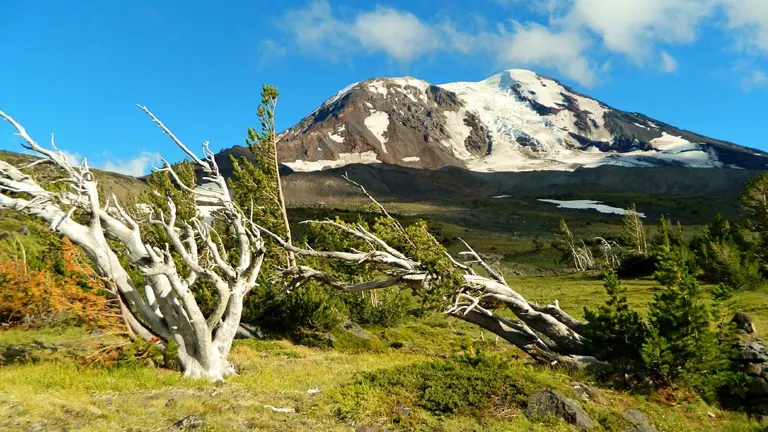
The forest is not only a haven for a myriad of wildlife species but also a playground for outdoor enthusiasts. It offers a plethora of recreational activities such as hiking, camping, fishing, and skiing, drawing visitors who seek both adventure and tranquility amidst its scenic vistas. The Gifford Pinchot National Forest, with its rich ecological diversity and its commitment to conservation and recreation, stands as a testament to the enduring value of America’s public lands.
Characterizing Features of Gifford Pinchot National Forest
- Vast Area and Diverse Topography: The Gifford Pinchot National Forest spans an impressive 1.32 million acres, extending 116 km along the western slopes of the Cascade Range in Washington State. This vast area encompasses a rich tapestry of landscapes, including expansive old-growth forests, high mountain meadows, and several glaciers. The forest’s diverse topography is punctuated by numerous volcanic peaks, with Mount Adams standing as its highest point at 12,276 feet, making it the second tallest volcano in the state after Mount Rainier.
- Mount St. Helens National Volcanic Monument: A defining feature of the Gifford Pinchot National Forest is the Mount St. Helens National Volcanic Monument. Encompassing 110,000 acres, this monument was established by Congress in 1982 in response to the historic eruption of Mount St. Helens in 1980. The area serves as a living laboratory for volcanic and ecological study, allowing scientists and visitors alike to observe the ongoing process of ecological recovery and the raw power of nature.
- Ecological Diversity: The forest’s ecological diversity is notable, with its varying elevations and climates supporting a wide range of plant and animal species. From temperate rainforests at lower elevations to alpine environments at higher altitudes, the forest offers a mosaic of habitats. This diversity is critical for the conservation of numerous species and serves as a key indicator of the forest’s overall health and resilience.
- Cultural and Historical Significance: The Gifford Pinchot National Forest has a rich cultural and historical background. It was named after Gifford Pinchot, a pioneer in American conservation, emphasizing the forest’s long-standing role in environmental stewardship. Additionally, the forest has been an integral part of the local indigenous communities for centuries, with its lands being a source of sustenance and spiritual value.
- Recreational Hub: The forest is a major recreational destination, offering a multitude of activities like hiking, camping, fishing, and skiing. Its well-developed trail system, scenic byways, and accessible recreational facilities cater to outdoor enthusiasts of all interests and skill levels, making it a year-round destination for adventure and nature exploration.
History
The Gifford Pinchot National Forest, named in honor of Gifford Pinchot, the first Chief of the United States Forest Service and a staunch advocate for conservation, boasts a rich and storied past. Its roots trace back to the late 19th century when it was originally designated as part of the Mount Rainier Forest Reserve in 1897. This early conservation effort marked the beginning of a journey towards sustainable forest management. In 1908, the area evolved into the Columbia National Forest, encompassing 941,440 acres, a significant expansion that reflected the growing recognition of the importance of these lands. The forest’s history is also intertwined with the indigenous communities of the region. Notably, in 1855, the Yakama tribe was compelled to sign a treaty, ceding lands but retaining off-reservation resource rights, a treaty later challenged and modified in 1916 by the Washington State Supreme Court. These events underscore the complex interplay between native rights and conservation policies.
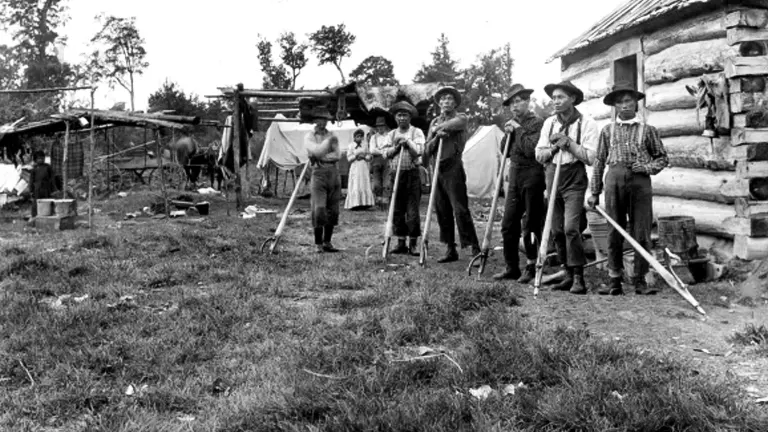
In 1949, the forest was renamed to honor Gifford Pinchot, paying tribute to his pioneering work in forestry and conservation. Pinchot’s vision of managed, sustainable forestry practices was foundational in shaping the forest’s management ethos. The addition of the Mount St. Helens National Volcanic Monument in 1982 further enhanced the forest’s profile, marking it as a site of significant geological and ecological interest. Over the years, the Gifford Pinchot National Forest has stood as a testament to the evolving understanding of forest management, balancing conservation, recreation, and sustainable use, while continuing to be a vital resource for both wildlife and humans.
Importance in Conservation and Recreation in Gifford Pinchot National Forest
The Gifford Pinchot National Forest epitomizes the delicate balance between conservation and recreation, serving as a beacon of sustainable environmental stewardship. As one of the United States’ oldest national forests, it plays a crucial role in the preservation of diverse ecosystems. Spanning over 1.3 million acres, this forest is not just a refuge for a myriad of wildlife, including threatened species like the northern spotted owl and various salmonids, but also a vital contributor to ecological stability. Its sprawling landscapes of old-growth forests, alpine meadows, and volcanic features are integral to biodiversity conservation and act as key buffers in the fight against climate change.
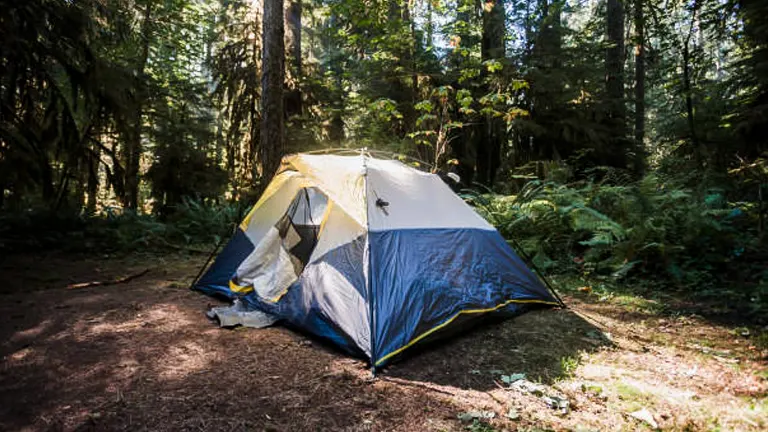
On the recreational front, Gifford Pinchot National Forest is a haven for outdoor enthusiasts. Its extensive network of trails invites hikers and bikers of all levels, while the rivers and lakes within its bounds are favored spots for fishing and boating. The inclusion of the Mount St. Helens National Volcanic Monument adds a unique dimension, offering visitors a glimpse into the dynamic nature of Earth’s geology. Beyond these activities, the forest’s scenic beauty provides ample opportunities for photography, wildlife observation, and peaceful contemplation. Through visitor centers, interpretive programs, and guided tours, the forest also plays an educational role, enhancing public awareness about the importance of environmental protection. This fusion of conservation and recreation underscores the forest’s significance, not only as a recreational treasure but also as an invaluable resource for fostering a deeper connection with and appreciation for the natural world.
Unique Location
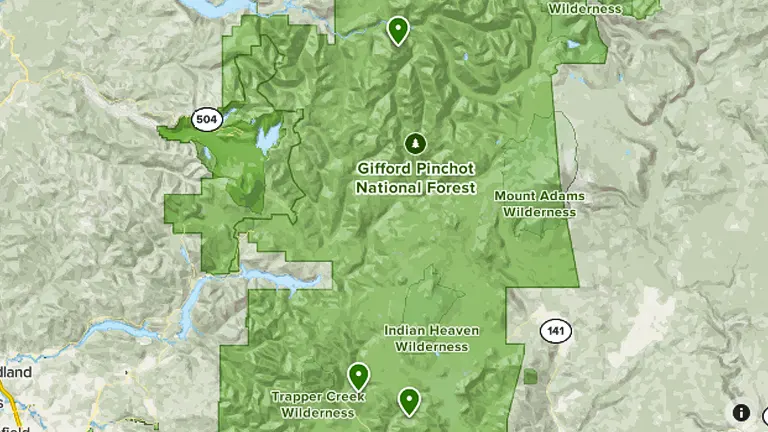
The Gifford Pinchot National Forest is strategically located in southern Washington, extending along the western slopes of the Cascade Range. This positioning places it between Mount Rainier National Park to the north and the Columbia River to the south, contributing to its diverse environmental conditions. Spanning across several counties, predominantly in Skamania County, the forest also covers areas in Lewis, Yakima, Cowlitz, and Klickitat counties. Its unique location includes significant volcanic landscapes, such as Mount St. Helens and Mount Adams, alongside Mount Rainier nearby. This geographical setting results in a varied terrain, hosting a range of ecosystems and wildlife, and making the forest an important site for both ecological study and outdoor recreation.
Diverse Vegetation and Plant Species
- Douglas Fir (Pseudotsuga menziesii): As one of the dominant tree species in Gifford Pinchot National Forest, the Douglas Fir stands tall and majestic. This evergreen conifer is not only significant for its ecological role in the forest but also for its economic value, being a primary source of timber in the Pacific Northwest.
- Western Hemlock (Tsuga heterophylla): Another predominant species in the forest, the Western Hemlock, is easily identifiable by its drooping top and feathery foliage. It thrives in the moist, temperate climate of the forest and contributes greatly to the area’s lush, green appearance.
- Western Red Cedar (Thuja plicata): Known for its distinct aromatic wood and resistance to decay, the Western Red Cedar is a valuable and culturally significant tree. It is often found in moist riparian zones and plays an important role in traditional indigenous crafts and construction.
- Ponderosa Pine (Pinus ponderosa): The Ponderosa Pine, with its tall, straight trunk and distinctive bark, adds diversity to the higher, drier elevations of the forest. This species is noted for its resistance to fire and ability to thrive in various soil types.
- Pacific Yew (Taxus brevifolia): This small, shade-tolerant tree is notable for its dark, evergreen leaves and red berries. The Pacific Yew gained prominence in the medical world as the source of the cancer-fighting compound, Taxol.
- Oregon Grape (Mahonia aquifolium): An understory shrub, the Oregon Grape is recognizable by its holly-like leaves and yellow flowers, followed by dark blue berries. It is Oregon’s state flower and is valued for its ornamental and medicinal properties.
- Sword Fern (Polystichum munitum): A common fern in the forest, the Sword Fern is characterized by its long, sword-like fronds. It’s a crucial understory plant, providing habitat and food for various forest creatures.
- Huckleberry (Vaccinium): The huckleberries, particularly the evergreen and red huckleberries, are highly prized for their edible fruit. These shrubs are an important food source for wildlife and have significant cultural value for indigenous peoples.
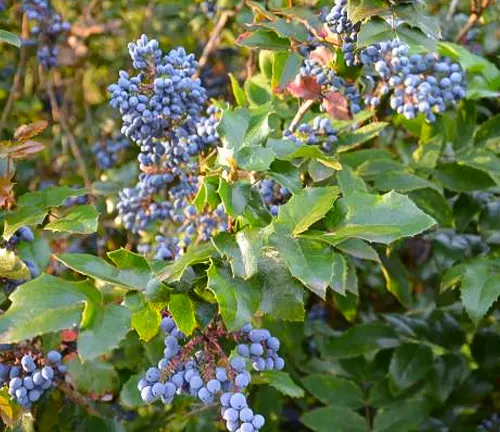
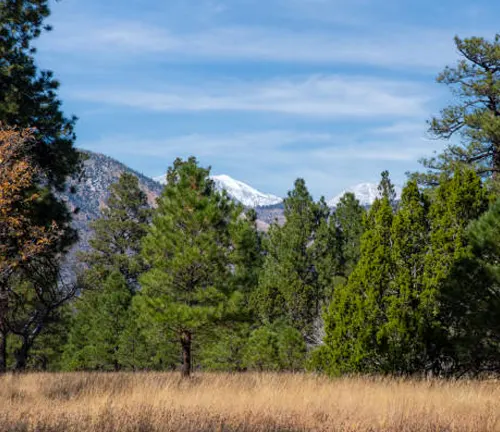
Fauna
- Northern Spotted Owl (Strix occidentalis caurina): This elusive bird is a symbol of old-growth forests in the Pacific Northwest. The Northern Spotted Owl prefers dense forest canopies and is a species of concern due to habitat loss and competition from the invasive barred owl.
- American Black Bear (Ursus americanus): A common resident of the forest, the American Black Bear is an adaptable mammal that can be found in various habitats within the park. While generally shy and elusive, they play a crucial role in the ecosystem as apex omnivores.
- Elk (Cervus canadensis): The majestic elk, or wapiti, are commonly seen in the forest’s meadows and open areas. These large herbivores are vital to the ecosystem, influencing vegetation patterns and providing prey for predators.
- Pika (Ochotona princeps): These small, mountain-dwelling mammals are often heard before they are seen, known for their distinctive calls. Pikas are sensitive to temperature changes, making them important indicators of ecological health in mountainous environments.
- Coho Salmon (Oncorhynchus kisutch): The forest’s rivers and streams are critical habitats for the lifecycle of the Coho Salmon. These fish are an essential part of the forest’s aquatic ecosystems and are vital for nutrient cycling.
- Bald Eagle (Haliaeetus leucocephalus): Often seen near the forest’s water bodies, the Bald Eagle is a powerful symbol of wilderness. These majestic birds depend on large, mature trees for nesting and open water bodies for feeding.
- Mountain Beaver (Aplodontia rufa): Despite its name, the Mountain Beaver is not a beaver but a unique rodent species. They are important ecosystem engineers, known for their burrowing habits which help in soil aeration and nutrient redistribution.
- Columbia Black-Tailed Deer (Odocoileus hemionus columbianus): A subspecies of mule deer, the Columbia Black-Tailed Deer is commonly found throughout the forest. They play a significant role in the food chain, serving as prey for large predators like cougars and bears.
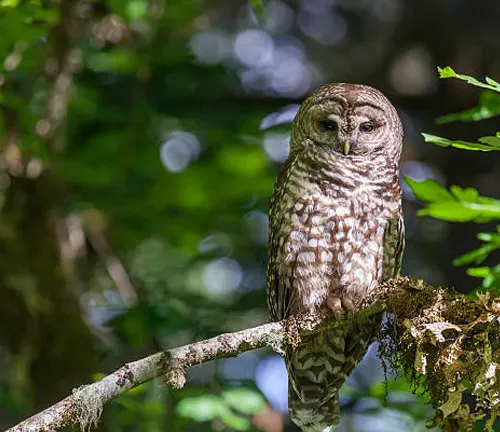
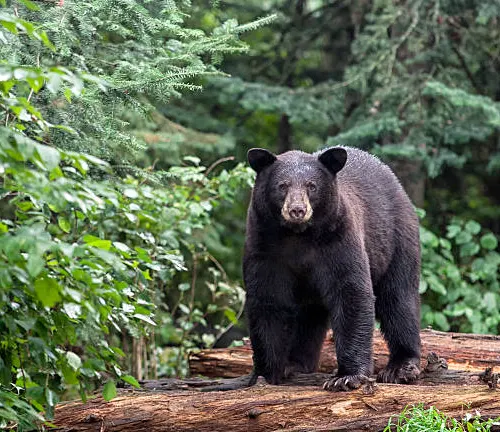
Attractions in Gifford Pinchot National Forest
1. Mount St. Helens National Volcanic Monument
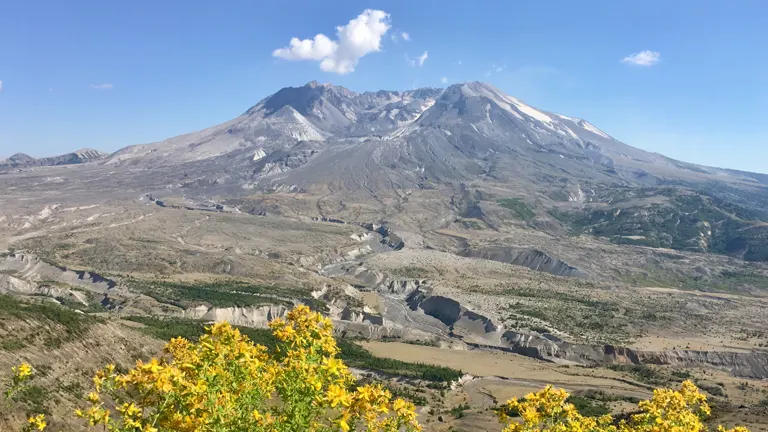
Perhaps the most famous attraction in the Gifford Pinchot National Forest, the Mount St. Helens National Volcanic Monument offers a unique opportunity to explore and learn about volcanic activity and its impact on the surrounding landscape. Visitors can experience the aftermath of the 1980 eruption through various viewpoints, interpretive centers, and hiking trails. The Johnston Ridge Observatory, in particular, provides stunning views of the crater and informative exhibits.
2. Mount Adams
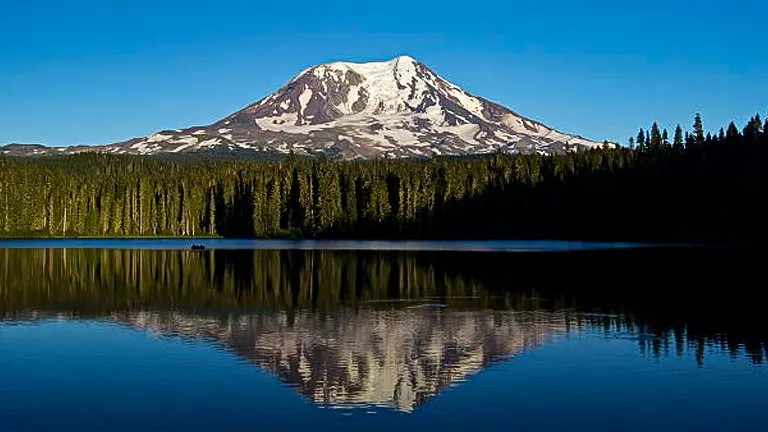
As the second tallest peak in Washington, Mount Adams presents a challenging yet rewarding experience for hikers and climbers. Its less crowded trails compared to Mount Rainier offer a serene adventure, with panoramic views of the surrounding wilderness. The area around Mount Adams also features beautiful meadows and lakes, ideal for more leisurely hikes and picnics.
3. Lewis River Waterfalls
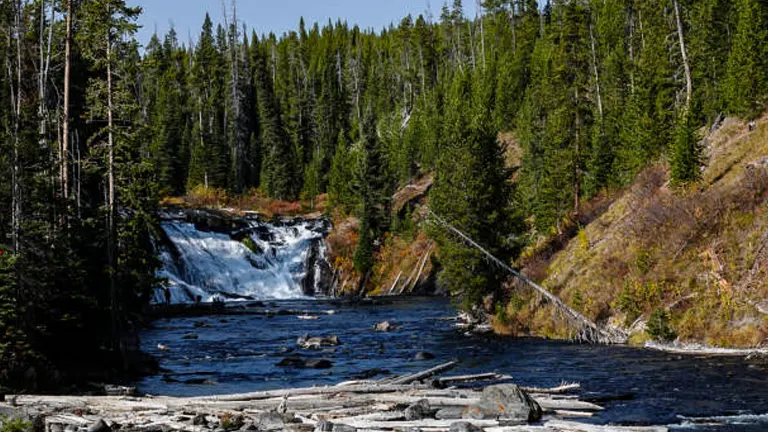
This series of stunning waterfalls, including Lower, Middle, and Upper Lewis River Falls, is a highlight for many visitors. Each waterfall has its unique charm and there are several viewpoints and trails that allow visitors to experience their beauty up close. The areas around the waterfalls are also popular spots for picnics and camping.
4. Indian Heaven Wilderness
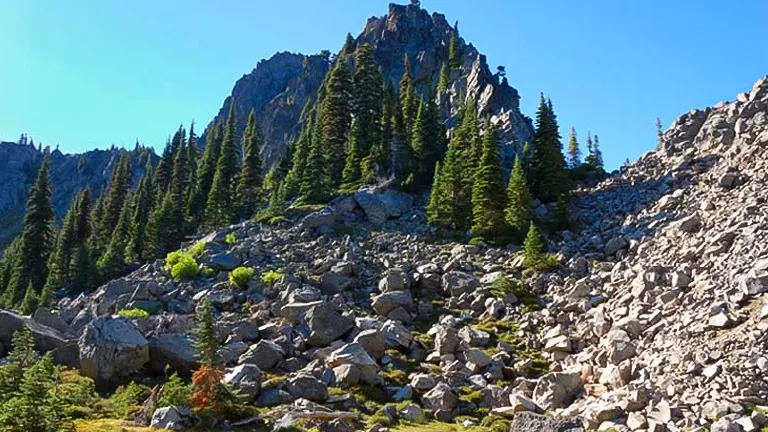
Known for its beautiful alpine meadows and numerous lakes, the Indian Heaven Wilderness is a hiker’s paradise, especially in the fall when the huckleberries are ripe for picking. The area is also steeped in Native American history, with several sites used by indigenous tribes for gathering and ceremonial purposes.
5. Ape Caves
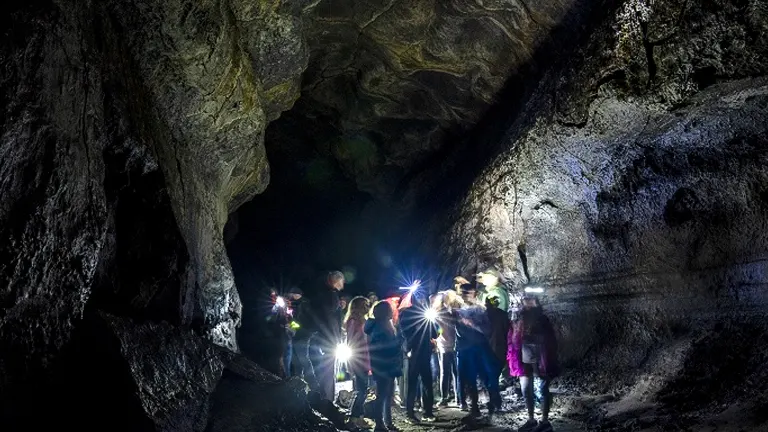
One of the longest lava tubes in North America, the Ape Caves offer a fascinating underground adventure. Visitors can explore this unique geological feature, which was formed over 2,000 years ago during a Mount St. Helens eruption. The caves provide two main trails – the lower cave for an easier walk and the upper cave for a more challenging experience.
6. Trout Lake
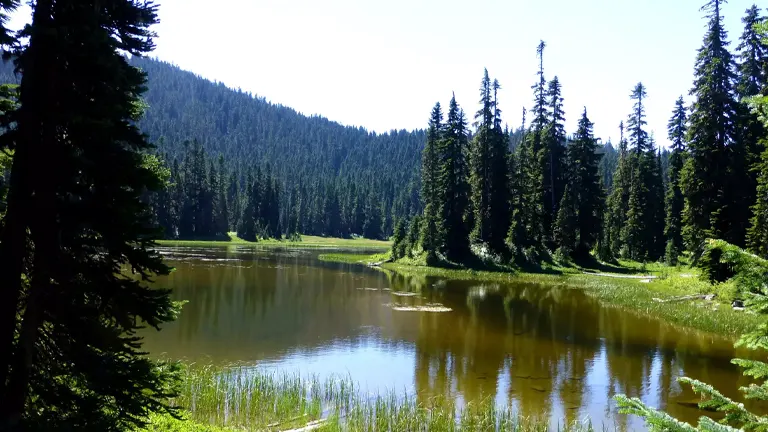
Nestled at the base of Mount Adams, Trout Lake is known for its idyllic setting and outdoor recreation opportunities. It is a popular spot for fishing, kayaking, and paddleboarding. The area around the lake also offers picturesque camping spots and hiking trails.
7. Wind River Arboretum
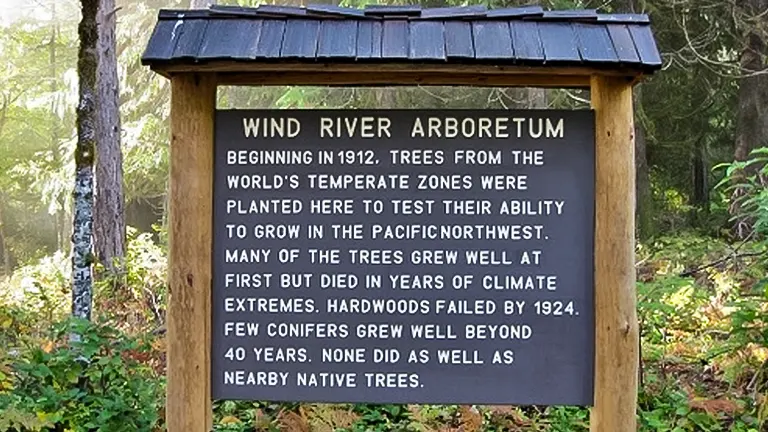
This hidden gem within the forest is a treat for tree lovers and those interested in botany. The arboretum features a variety of tree species, both native and exotic, and provides a peaceful setting for a leisurely walk or a picnic amidst nature.
8. Packwood Lake
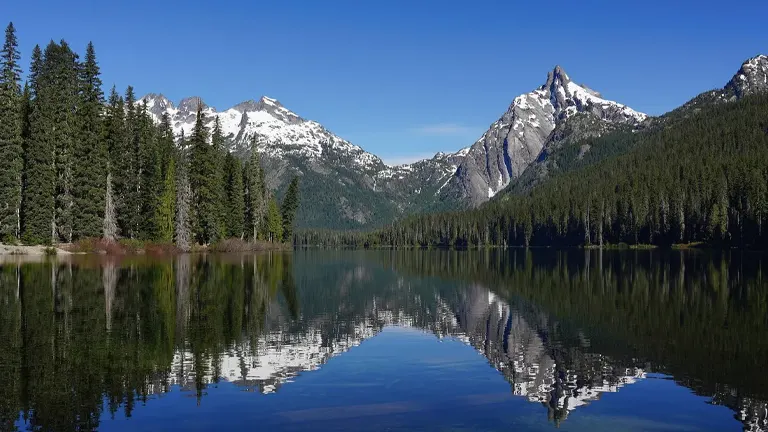
A beautiful and serene destination, Packwood Lake is ideal for those looking to escape into nature. Accessible via a moderate hike, the lake offers stunning views, fishing opportunities, and the chance to spot wildlife in its natural habitat. It’s also a gateway to further adventures in the Goat Rocks Wilderness.
Recreational Activities in Gifford Pinchot National Forest
- Hiking and Backpacking: With a vast network of trails, Gifford Pinchot National Forest is a hiker’s paradise, offering routes for all skill levels. From short day hikes to challenging multi-day backpacking trips, the trails traverse through diverse landscapes, including dense forests, alpine meadows, and volcanic areas. Hiking in this forest provides an excellent opportunity to experience the natural beauty and ecological diversity of the region.
- Mountain Biking: Mountain bikers can enjoy a variety of trails in the forest, ranging from gentle rides through scenic meadows to more challenging routes on rugged terrain. The forest’s varied topography makes it a popular destination for mountain biking enthusiasts seeking adventure amidst nature.
- Camping: Gifford Pinchot National Forest offers numerous camping options, from developed campgrounds with amenities to primitive backcountry sites. Camping here allows visitors to immerse themselves in the peacefulness of the forest, with opportunities for stargazing, wildlife observation, and enjoying the serene natural environment.
- Fishing: The forest’s rivers, lakes, and streams are home to various fish species, making it a favorite spot for anglers. Fishing in Gifford Pinchot National Forest is not only a relaxing pastime but also a chance to appreciate the forest’s aquatic ecosystems. Whether fly fishing in a mountain stream or casting a line in a tranquil lake, anglers can find a satisfying experience.
- Wildlife Viewing and Bird Watching: The forest’s diverse habitats support a wide range of wildlife and bird species. Wildlife viewing and bird watching are popular activities, offering chances to observe animals like elk, deer, and black bears, as well as bird species including the northern spotted owl and bald eagle, in their natural environment.
- Skiing and Snowshoeing: During the winter months, the forest transforms into a snowy wonderland, ideal for cross-country skiing and snowshoeing. These activities provide a unique way to explore the forest’s winter beauty, with trails winding through snow-covered trees and frozen landscapes.
- Photography and Nature Study: For those interested in photography or nature study, the forest offers endless subjects, from sweeping landscapes and volcanic features to intimate details of flora and fauna. It’s a place where enthusiasts can capture stunning images or study the intricate workings of nature.
- Horseback Riding: Equestrians can enjoy several trails specifically designated for horseback riding. Riding through the forest on horseback is a serene way to experience the tranquility and grandeur of the natural surroundings, offering a unique perspective on the landscape.
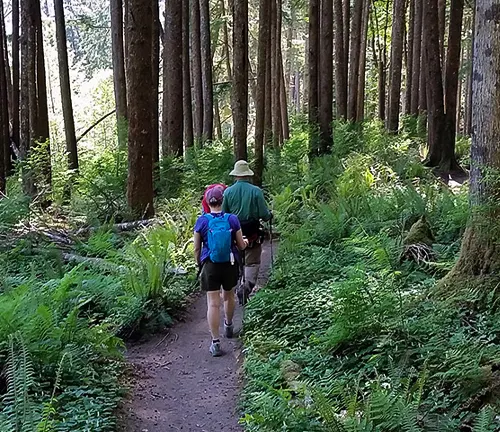
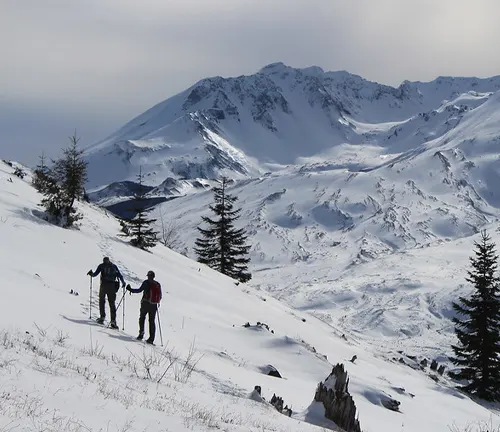
Each of these recreational activities provides a different way to connect with and enjoy the natural beauty of Gifford Pinchot National Forest. Whether seeking adventure, relaxation, or a deeper understanding of nature, visitors can find an array of options to suit their interests.
Different Facilities and Amenities in Gifford Pinchot National Forest
- Campgrounds: Gifford Pinchot National Forest offers a variety of campgrounds catering to different camping styles. From developed sites with amenities like restrooms, potable water, and picnic tables to primitive backcountry areas for a more secluded experience, the forest provides options for all types of campers. These facilities allow visitors to comfortably enjoy the natural beauty of the forest overnight.
- Visitor Centers: The forest features several visitor centers, including those at major attractions like Mount St. Helens. These centers provide educational exhibits, informative displays, and knowledgeable staff to help visitors learn about the forest’s ecology, geology, and history. They are excellent resources for planning your visit and understanding the significance of the area.
- Picnic Areas: Scattered throughout the forest, picnic areas offer visitors convenient spots to enjoy meals surrounded by nature. These areas typically include tables, restrooms, and sometimes grills, making them perfect for family outings, group gatherings, or a peaceful lunch in the woods.
- Hiking Trails: The forest boasts an extensive network of hiking trails ranging from easy walks to challenging treks. These well-maintained trails provide access to the forest’s diverse landscapes, including waterfalls, volcanic features, and alpine meadows. Trailheads often have parking areas and informational signage.
- Interpretive Sites: Several interpretive sites throughout the forest offer educational experiences about specific aspects of the forest’s environment. These sites might feature self-guided trails with interpretive panels, viewpoints with informational displays, or areas where natural phenomena like volcanic activity can be observed and understood.
- Boat Launches: For those interested in water-based activities, the forest provides boat launches at various lakes and rivers. These facilities enable visitors to easily access the water for activities like fishing, kayaking, and canoeing, enhancing the recreational experience in the forest’s aquatic environments.
- Wilderness Areas: Designated wilderness areas within the forest offer a chance to experience nature in its most pristine form. These areas are managed to preserve their natural condition, providing opportunities for solitude and unspoiled wilderness exploration. Access is typically more limited, with an emphasis on low-impact recreation.
- Ranger Stations: Ranger stations are located throughout the forest, where visitors can obtain information, permits, and advice from Forest Service staff. These stations are valuable resources for staying updated on current conditions, trail closures, fire restrictions, and other important information for a safe and enjoyable visit.
Each of these facilities and amenities enhances the visitor experience in Gifford Pinchot National Forest, providing convenience, safety, and opportunities for education and enjoyment. Whether you’re camping, hiking, learning, or simply relaxing, the forest’s infrastructure supports a wide range of activities and interests.
Tips and Advice for Visiting in Gifford Pinchot National Forest
- Check Weather Conditions: Before heading to Gifford Pinchot National Forest, it’s essential to check the local weather forecast. The weather can vary greatly, especially in mountainous areas, and being prepared for changing conditions is key to a safe and enjoyable visit. Pack accordingly, with layers for warmth and rain gear if necessary.
- Respect Wildlife: The forest is home to diverse wildlife, and it’s important to observe them from a safe distance. Feeding wildlife is prohibited as it can harm their health and alter natural behaviors. Store food securely and dispose of trash responsibly to avoid attracting animals to campgrounds and picnic areas.
- Stay on Designated Trails: To protect the forest’s delicate ecosystems, visitors should stay on designated trails while hiking or biking. Venturing off-trail can damage plant life and cause erosion, disturbing the natural habitat. Staying on trails also ensures your safety and reduces the risk of getting lost.
- Familiarize Yourself with Regulations: Be aware of specific regulations in the forest, such as fire restrictions, fishing and hunting licenses, and camping rules. Adhering to these regulations helps preserve the forest’s natural resources and ensures a sustainable environment for future visitors.
- Leave No Trace Principles: Practice Leave No Trace principles to minimize your impact on the environment. This includes packing out all trash, camping on durable surfaces, and not removing natural objects or cultural artifacts. Leave the forest as you found it, or better.
- Prepare for Remote Areas: Many areas in the forest are remote and do not have cell service. Plan your route, inform someone of your itinerary, and consider carrying a map, compass, or GPS device. It’s also a good idea to have a basic first aid kit and know how to use it.
- Be Fire-Safe: If you plan to have a campfire, ensure it’s allowed in your camping area and that there are no fire bans in place. Always use designated fire rings, keep fires small, and never leave them unattended. Before leaving, completely extinguish your fire.
- Pack Essentials: Bring essential items such as water, snacks, a first-aid kit, a flashlight, and extra clothing. Even on short trips, it’s important to be prepared for unexpected situations. Adequate water is particularly important as sources in the forest may not be potable.
Following these tips and advice can help ensure a safe, enjoyable, and environmentally responsible visit to Gifford Pinchot National Forest. By being prepared and respectful of nature, visitors can fully enjoy the beauty and tranquility of this remarkable natural area.
Recommendation
If you’re looking for a remarkable outdoor experience, Gifford Pinchot National Forest is a must-visit destination. Its stunning landscapes, ranging from the majestic Mount St. Helens to serene old-growth forests, cater to all—from hikers and nature lovers to those seeking peace in the great outdoors. With diverse wildlife, scenic trails, and educational opportunities, this forest offers a unique chance to immerse yourself in nature’s beauty. Whether for adventure or relaxation, Gifford Pinchot National Forest promises an unforgettable experience. Don’t miss the opportunity to explore this incredible testament to the wonders of the natural world.
Conclusion
In conclusion, Gifford Pinchot National Forest stands as a remarkable testament to the beauty and diversity of the Pacific Northwest’s natural landscapes. From the dramatic aftermath of Mount St. Helens’ eruption to the tranquil old-growth forests and the majestic heights of Mount Adams, it offers a mosaic of ecosystems that are both stunning and ecologically significant. This forest not only provides a haven for a wide range of wildlife and plant species but also serves as a vital playground for outdoor enthusiasts. Its extensive network of trails, diverse recreational activities, and rich historical and cultural significance make it a cherished destination for those seeking adventure, education, or simply a retreat into nature. Gifford Pinchot National Forest embodies the spirit of conservation and the joy of outdoor exploration, making it an invaluable resource for future generations to cherish and protect.
FAQs
- What is the best time of year to visit Gifford Pinchot National Forest?
The best time to visit depends on the activities you’re interested in. Summer months offer ideal conditions for hiking and camping, while winter is perfect for snow sports. Spring and fall provide beautiful scenic views with fewer crowds. - Can I camp anywhere in Gifford Pinchot National Forest?
Designated camping areas should be used for camping. While backcountry camping is allowed, it’s important to follow Leave No Trace principles and check specific regulations in the area you plan to camp. - Are there any entry fees or permits required?
Some areas, especially developed recreation sites, might require a fee or a pass. The Mount St. Helens National Volcanic Monument, for instance, requires a pass. Always check the specific area’s requirements before visiting. - Is fishing allowed in the forest?
Yes, fishing is allowed, but you need to have a valid Washington State fishing license and adhere to the state’s fishing regulations. - What are some must-see attractions in the forest?
The Mount St. Helens National Volcanic Monument, the viewpoints of Mount Adams, and the numerous waterfalls along the Lewis River are some of the must-see attractions. - Are there any guided tours available?
Yes, guided tours are available, especially around Mount St. Helens. These tours offer educational insights and are great for those looking to learn more about the area’s geology and ecology. - What kind of wildlife might I see in the forest?
The forest is home to a variety of wildlife, including elk, deer, black bears, and the northern spotted owl. Always view wildlife from a distance and do not disturb them. - Are there any specific safety tips I should know before visiting?
Always be prepared for changing weather conditions, carry a map and compass (or GPS), have enough food and water, and let someone know your itinerary. In winter, be aware of avalanche risks in certain areas.
Gifford Pinchot National Forest is a captivating escape into nature’s wonders. With its stunning landscapes, rich wildlife, and myriad of outdoor activities, it offers an enriching experience for all visitors. A place of beauty and adventure, it reminds us of the importance of preserving natural treasures for future generations. Whether seeking tranquility or adventure, Gifford Pinchot National Forest is a destination that truly has something for everyone.


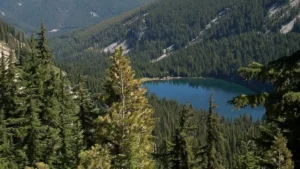
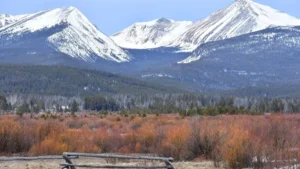

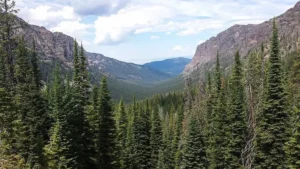
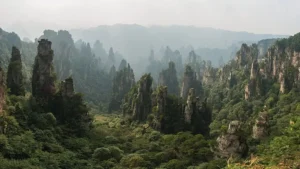


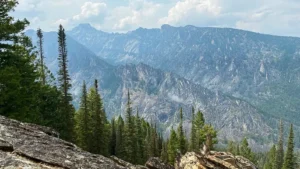
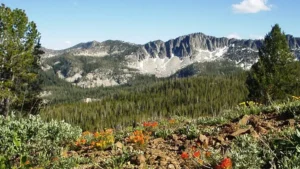


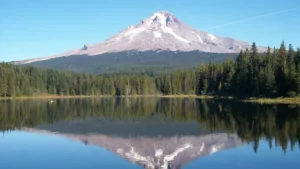
Leave your comment